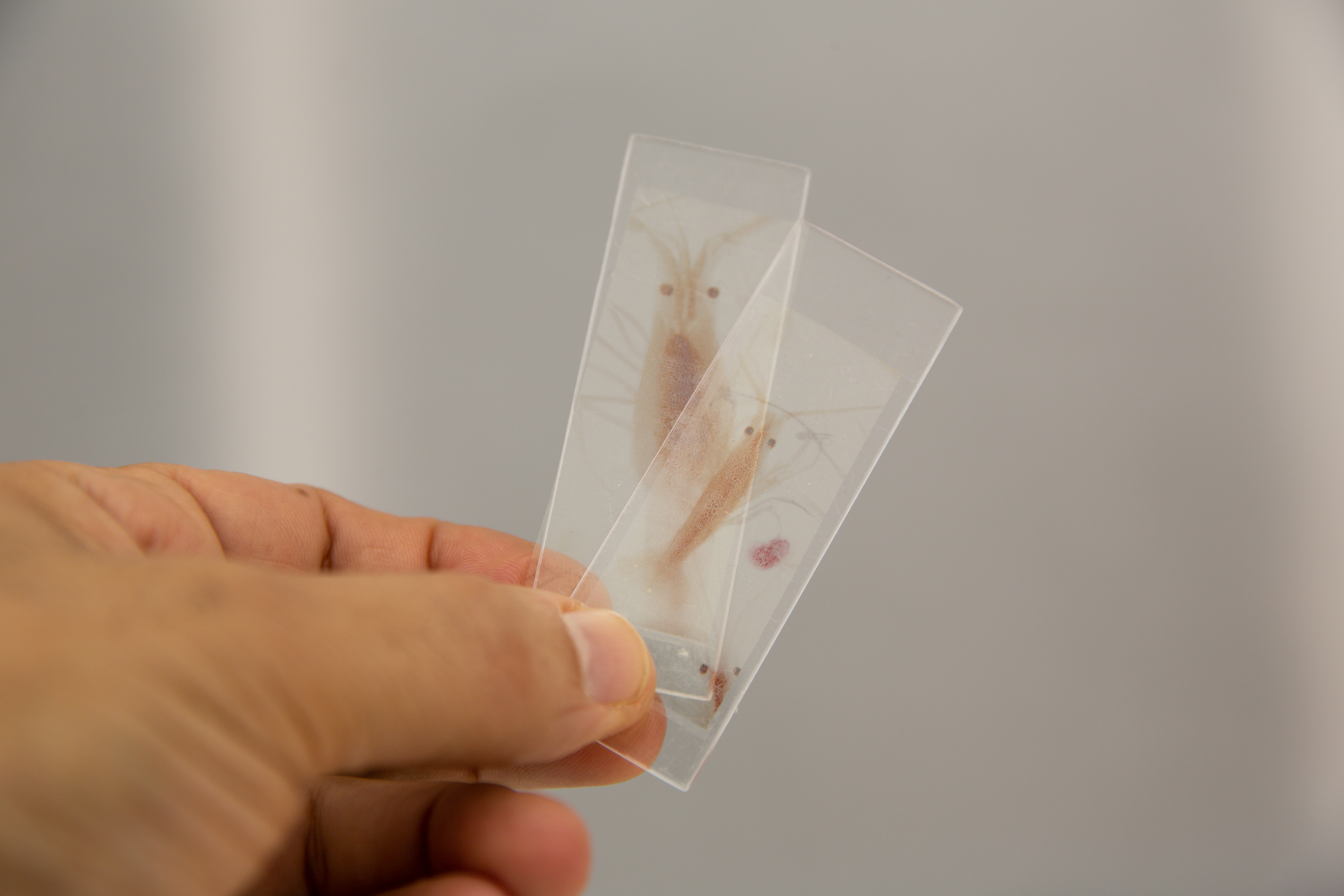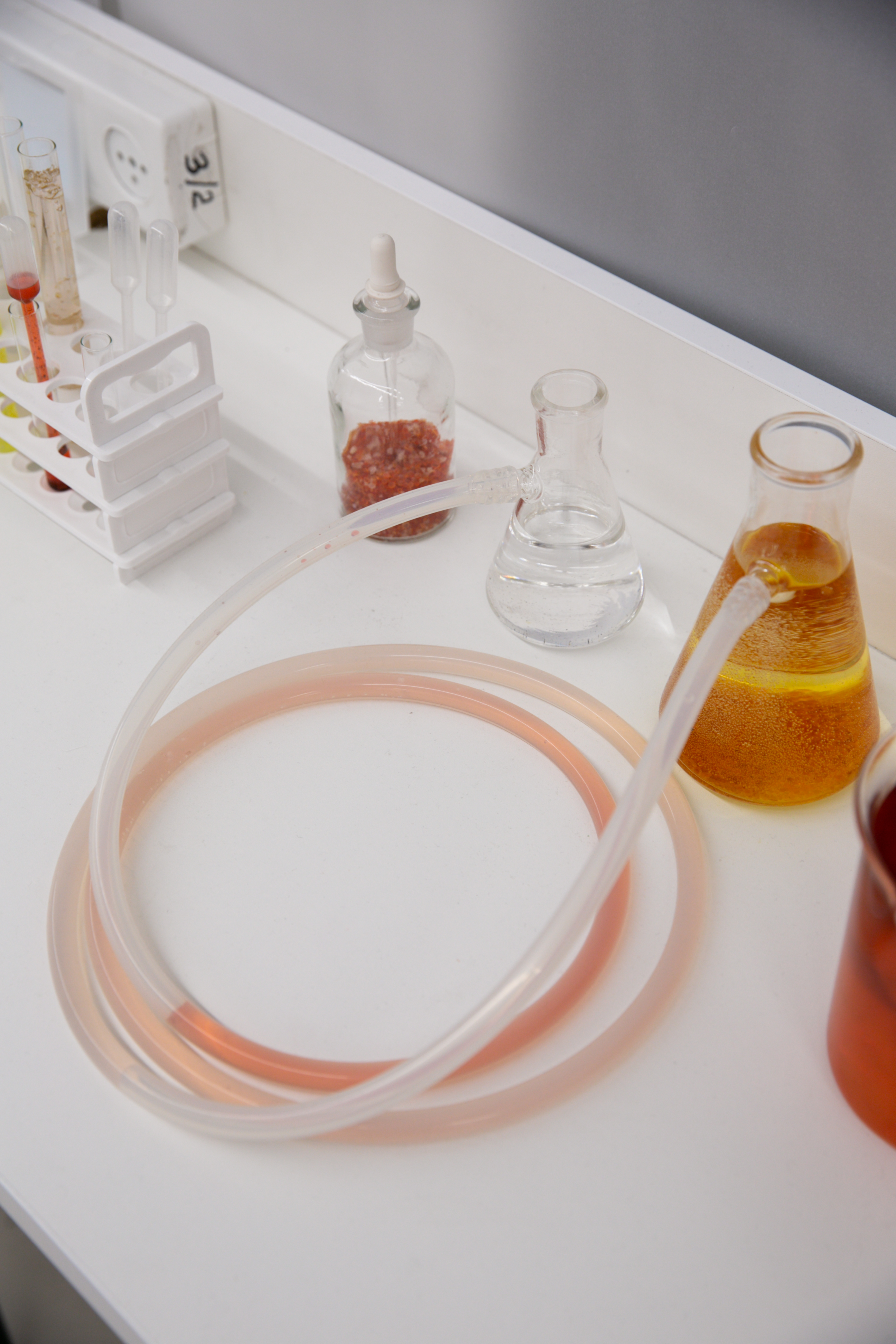
A tiny, ancient, and highly adaptable crustacean.
Amphipods have been around much longer than us, and they will probably still be here when we are long gone, even though many species — including humans — feed on them directly or indirectly. The amphipod’s size, hue and other physical characteristics change depending on many environmental factors, the most important of which is water temperature. The higher the temperature, the smaller the amphipod becomes. Amphipods are voracious and have a varied diet that includes dead cells, animal and plant remains, plankton, other amphipods, and microplastics.
Over the years, as the sea level and temperature rose, plastics piled up, and the amphipods got smaller and smaller. These inevitable changes caused mutations, and the amphipod’s organic tissue incorporated the plastic into itself. This hybridization has changed the amphipod’s form and pigmentation.
A mutation tree generated using DALL-E 2 illustrates the transition in which two distinct materials merge into a new hybrid organism in the phylogenetic tree.
Zohar-Yam Lerer, Maria Merfeld








